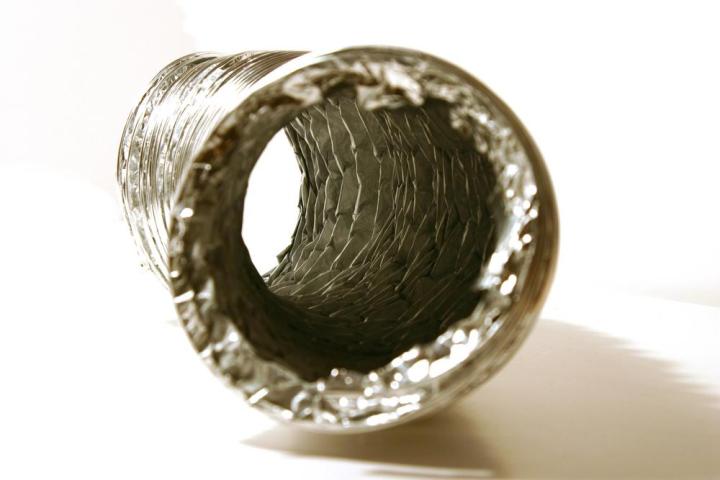
If your dryer hose (that big, accordion-like metallic tube that connects it to the wall) is longer than it should be, it has to work harder and expend more energy to pump steam out of the machine. During a single cycle, this extra energy expenditure might not be that big of a deal, but over time that wasted energy can add up. By shortening the hose as much as possible, you can effectively reduce the amount of energy required to dry a load of laundry. Not only will this save you money on utilities, but it’ll also extend the lifespan of your dryer. Here’s how to cut yours down if it’s a bit too long.
What you’ll need:
- Masking tape/painters tape
- Measuring tape
- Work gloves
- Tin snips
How it’s done:
-
Move the dryer out from the wall, far enough that you’ve got enough room to easily work in the space. Take a gander at your hose. If it’s already rather short and there isn’t much slack anywhere, go ahead and move the dryer back and grab yourself a beer – you’re done.
-
Take a good hard look at the vent hose and dryer duct to inspect for kinks, holes, and any other damage. If you find any, you might need to replace the hose entirely. This is also a good time to clear the tube of any lint/debris that has built up inside it. In either case, the next step is to carefully remove the vent hose from the back of the dryer and the wall.
-
Determine just how much hose you need to trim. Whip out that measuring tape and calculate the distance between where your dryer normally sits (this is going to be different since by this point you’ve pulled it out from the wall). Add a few inches to that measurement to ensure there’s enough room to make the connection on both sides.
-
Measure and mark your vent hose. Measure the distance you just figured out and mark it off with a bit of tape. You could also use a marker, but dryer tubes are relatively difficult to write on, so tape is preferable. Wrap it all the way around so you don’t have trouble cutting a straight edge.
-
Trim the hose. Using your tin snips (believe us, scissors won’t cut it here), carefully trim the vent hose along the line you marked off with tape. And don’t forget your gloves – the thin metal hose often has really sharp edges once it’s cut.
-
Carefully reattach your vent hose to the dryer, then attach it to the wall. If you aren’t already using dryer tube clamps to seal off the connection, we highly recommend you go get some. When both sides are reattached, go ahead and scoot your dryer back towards the wall as necessary.



